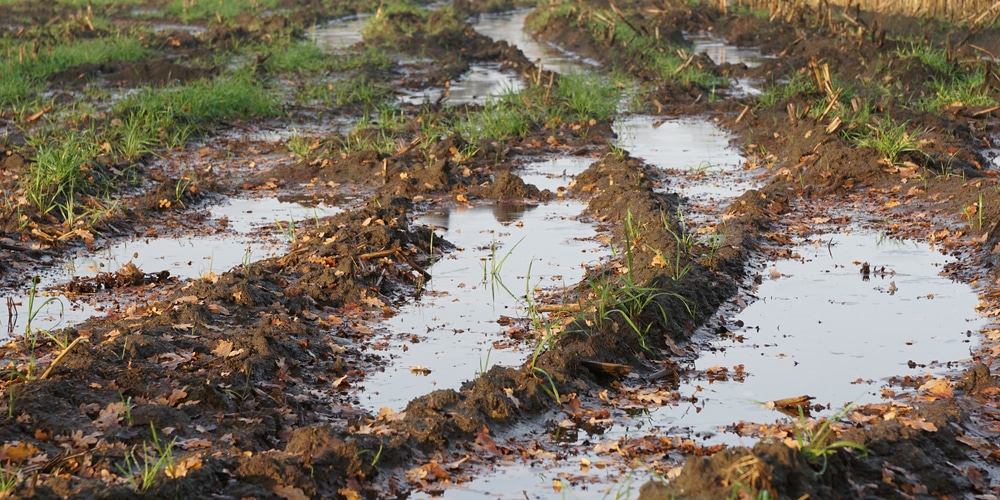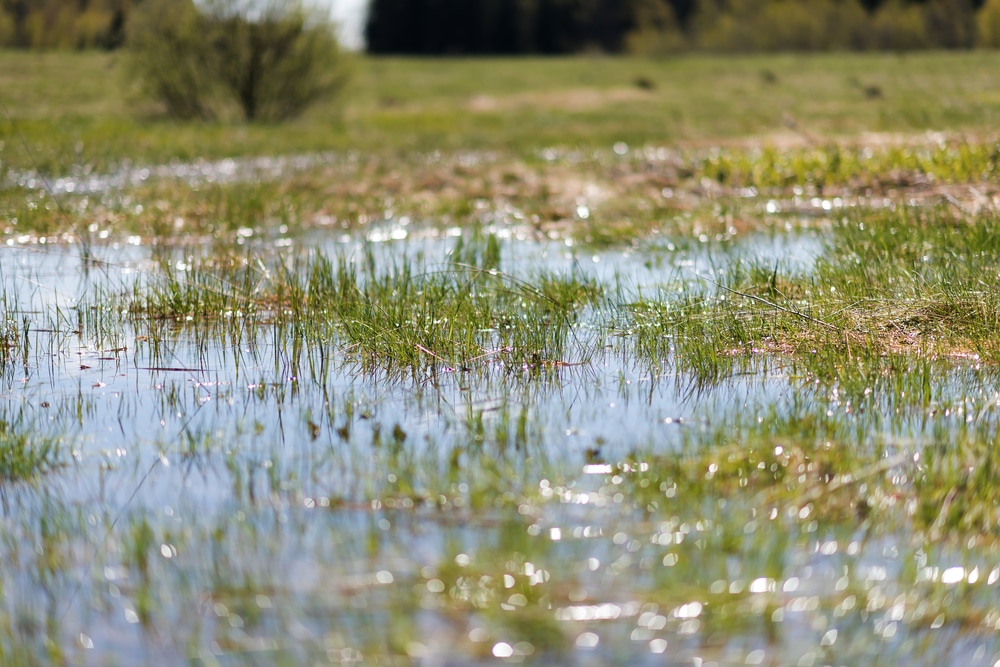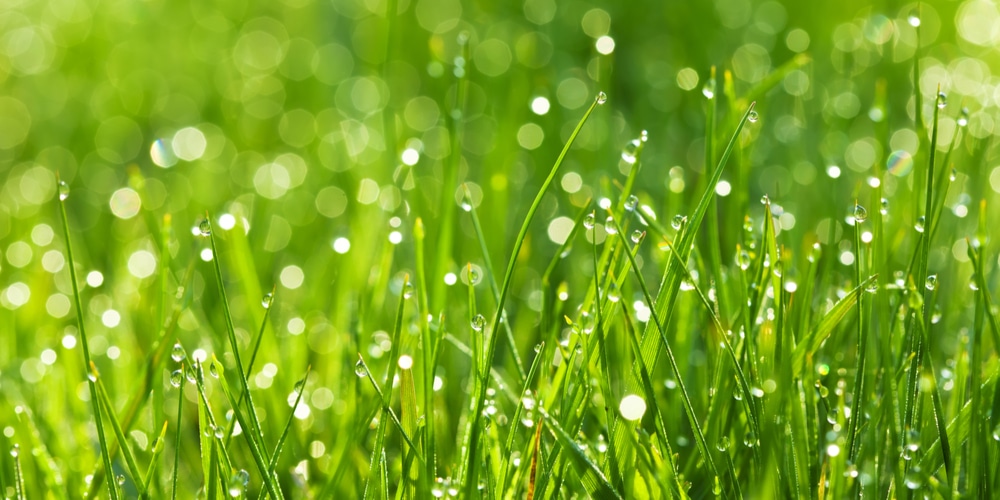No matter how much you love your neighbors, let’s face it—an unspoken assessment goes on between the quality of each other’s lawns. So, if you’re having issues with grass turning brown after lots of rain, read on to discover why this happens and what to do about it.
Why Grass Turns Brown After Rain

Below are some of the most common reasons why your grass turns brown after a lot of rain.
Drowning the Roots
Grass requires water, and the amount it needs varies depending on the grass type. But too much water can cause your grass to turn brown and die.
So, if your grass turns brown immediately after heavy rain, too much water is likely the culprit. Unfortunately, the reason why grass turns brown in this case is that it’s drowning. To make matters worse, fungus from excess moisture might also attack your lawn.
It’s impossible to control mother nature. But you’re adding to this issue if you water your lawn and frequently have problems with your grass turning brown after it rains.
Therefore, the first step is to stop watering your lawn to save your grass before it dies for good. From there, you can implement several other strategies to prevent and remedy the problem.
Too Much Foot Traffic
Your grass is extra susceptible to damage after it rains. So, if you walk on it while the soil is still soggy, you’ll compound the water’s effect, killing it faster.
We know that you might be unable to avoid walking on your grass, such as if you have a dog that needs to go outside. In that case, consider sacrificing a small area for foot or paw traffic.
Excessive Weeds
Weeds aren’t only an eyesore; they also strip vital nutrients from the soil around your grass. But when weeds first show up, they’re a sign that the soil is in good health.
Setting up a weed management system during the growing season is vital if you’re struggling with a brown lawn after it rains. That way, a lack of nutrients from weeds is one less aspect you’ll have to worry about after a lot of rain.
How To Revive Your Brown Grass After Rain
Below are some of the best ways to get your grass back to a healthy state after it rains.
- Don’t water until the soil dries
- Dethatch your lawn to remove dead grass
- Aerate your grass at least once per year
Dethatching your lawn is beneficial because it strips away dead grass and debris that can prevent proper drainage and grass growth.
Similarly, aerating your lawn is an excellent way to improve drainage since it creates tiny holes that give water an outlet to move deeper into the soil and away from pooling around your grass’ roots.
The Importance of the Grass Species
Many horticulturists are working on developing grass strains that stay green despite long bouts of drought. But this can sometimes work to the grass’ demise if you live in an area that receives lots of rain.
For this reason, prairie-like grasses are ideal for areas with heavy rain. These grasses have deep roots that withstand soggy soil conditions and drought.
Two of the best types of grass that can withstand excess rain without turning brown include:
- Tall fescue
- Bahia grass
If you don’t want to uproot your current grass to plant a different species, all hope isn’t lost. Instead, consider letting your grass grow taller before mowing it.
That’s because the taller the grass, the deeper the root system. Roots help break up dense soil, allowing water to soak more easily into the soil instead of pooling.
Therefore, letting your grass grow taller before mowing it has a double benefit in preventing it from turning brown—it has deeper roots to escape drowning, and its long roots will encourage the water to drain faster.
The Bottom Line
Grass turning brown after lots of rain is frustrating because it can feel like you don’t have control. But by following the suggestions here, you’ll turn your brown grass to green faster than other yards and be the envy of your neighborhood.

